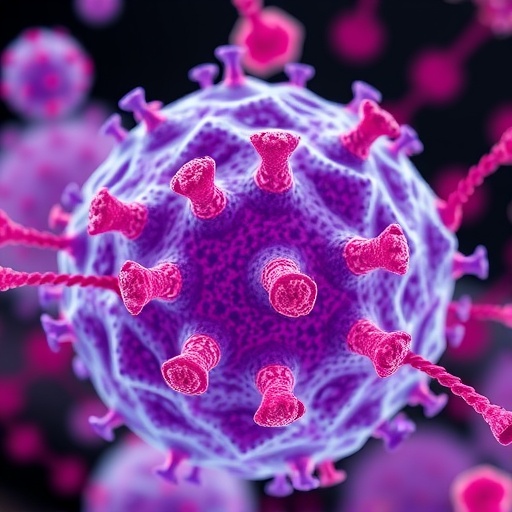ATLANTA -October 2, 2018,- Nearly 14 million additional adolescents (11-12 years of age) beyond those who will be vaccinated based on current rates will need to receive the human papillomavirus (HPV) vaccine between now and 2026 to reach the American Cancer Society's goal of an 80% vaccination rate by that year. The figure comes from a new report from American Cancer Society investigators looking to guide HPV cancer control efforts in the wake of recent goal-setting. The report appears early online in Cancer.
HPV accounts for nearly all cervical cancers as well as 91% of anal cancers, 70% of oropharyngeal (throat) cancers, and 60% to 75% of other genital cancers (penile, vaginal, and vulvar cancers). A previous analysis by ACS investigators estimated that HPV caused about 30,000 cancers and about 6,500 cancer deaths in 2014. The majority (90%) of these cancers can be prevented through HPV vaccination. However, the uptake of the HPV vaccine is suboptimal and lags behind other recommended vaccines for this age group.
Healthy People 2020 sets a target of 80% of vaccine-eligible adolescents up to date with HPV vaccination by age 15, while the American Cancer Society set a goal that by 2026, 80% of adolescents will be up to date before their 13th birthday.
Investigators led by Stacey Fedewa, Ph.D. set out to determine the number of additional pre-teens aged 11 to 12 years who need to be vaccinated for the ACS goal to be reached, as well as to describe the characteristics of those who have not initiated or completed vaccination, to help to inform programs aimed at increasing vaccination uptake.
In 2016, 35.5% of females and 31.5% of males were up to date with the HPV vaccine by their 13th birthday. To reach 80% by 2026, an additional 14.39 million pre-teens (6.77 million females and 7.62 million males) would need to receive two doses of the vaccine to reach 80% compliance. A total of 57.62 million doses would need to be administered, with 18.27 million of those doses representing the additional number needed beyond current vaccination levels for 80% to be achieved.
The authors say a disproportionate percentage of males, whites, and privately insured adolescents are not up to date with HPV vaccination. Among those, the large majority had received a wellness checkup between the ages of 11 and 12 years (>90%); most lived in households above the poverty level (80.4%) and had mothers with more than 12 years of education. The largest proportion of adolescents who had not initiated HPV vaccine had private insurance (56.5%). Less than 5% were uninsured.
In the United States, there are several federal and state-based initiatives aimed at improving vaccination rates. The federally funded Vaccines for Children program provides free vaccines for low-income children, and this program likely contributes to the counterintuitive finding that vaccination rates were higher in Medicaid-insured adolescents versus privately insured adolescents.
"In our study, more than 90% of adolescents who had not initiated HPV vaccination by their 13th birthday had an 11- to 12-year-old wellness visit," said Dr. Fedewa. "So, most adolescents presumably had an opportunity to be vaccinated during this timeframe. Why it's not happening is a critical question. While we could not determine whether a provider recommended the vaccine during these visits, previous studies show that only about half of parents reported that they had ever received a recommendation to vaccinate their child against HPV."
Providers cite several barriers to recommending HPV vaccination, including incomplete knowledge of the vaccine's benefits, parental hesitancy, and anticipated parental refusal or deferment. These barriers may be particularly prominent among our study population as some providers may anticipate greater parental refusal and discomfort discussing a sexually transmitted infection in younger patients. However, for the vaccine to be most effective, vaccination should be completed at the recommended age of 11-12 years.
The authors conclude that reaching the 80% goal "has the potential to prevent deaths from several cancers. Broad implementation of the vaccine through innovative strategies for improving physician recommendations, parental acceptance, and access to care is necessary to achieve this goal."
###
Article:
Fedewa, S. A., Preiss, A. J., Fisher‐Borne, M. , Goding Sauer, A. , Jemal, A. and Saslow, D. (2018), Reaching 80% human papillomavirus vaccination prevalence by 2026: how many adolescents need to be vaccinated and what are their characteristics?. Cancer. doi:10.1002/cncr.31763
.
URL: https://onlinelibrary.wiley.com/doi/abs/10.1002/cncr.31763
Media Contact
David Sampson
[email protected]
@ACSNews
http://www.cancer.org
http://dx.doi.org/10.1002/cncr.31763




